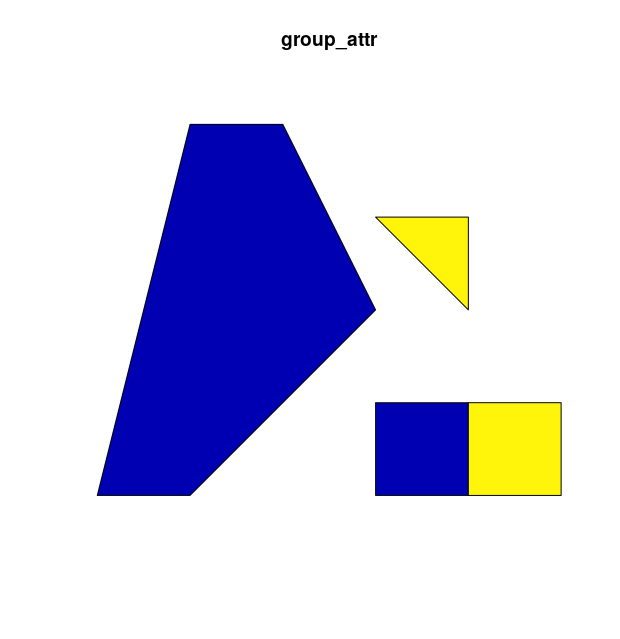I have a sf object of POLYGON geometry type. I would like to aggregate these polygons into MULTIPOLYGONs using grouping attribute (group_attr) and join a new MULTIPOLYGON object with a attribute table. So, as a result, I will have a sf object with two rows and three columns (group_attr, second_attr, geometry). I've already tried to used st_cast - it works well on sfc objects, but not on sf objects. Is it possible to do this using sf package?
p1 <- rbind(c(0,0), c(1,0), c(3,2), c(2,4), c(1,4), c(0,0))
pol1 <-st_polygon(list(p1))
p2 <- rbind(c(3,0), c(4,0), c(4,1), c(3,1), c(3,0))
pol2 <-st_polygon(list(p2))
p3 <- rbind(c(4,0), c(4,1), c(5,1), c(5,0),c(4,0))
pol3 <-st_polygon(list(p3))
p4 <- rbind(c(3,3), c(4,2), c(4,3), c(3,3))
pol4 <-st_polygon(list(p4))
d <- data.frame(group_attr = c(1, 1, 2, 2),
second_attr = c('forest', 'forest', 'lake', 'lake'))
d$geometry <- st_sfc(pol1, pol2, pol3, pol4)
df<- st_as_sf(d)
plot(df)
df
Simple feature collection with 4 features and 2 fields
geometry type: POLYGON
dimension: XY
bbox: xmin: 0 ymin: 0 xmax: 5 ymax: 4
epsg (SRID): NA
proj4string: NA
group_attr second_attr geometry
1 1 forest POLYGON((0 0, 1 0, 3 2, 2 4...
2 1 forest POLYGON((3 0, 4 0, 4 1, 3 1...
3 2 lake POLYGON((4 0, 4 1, 5 1, 5 0...
4 2 lake POLYGON((3 3, 4 2, 4 3, 3 3))

